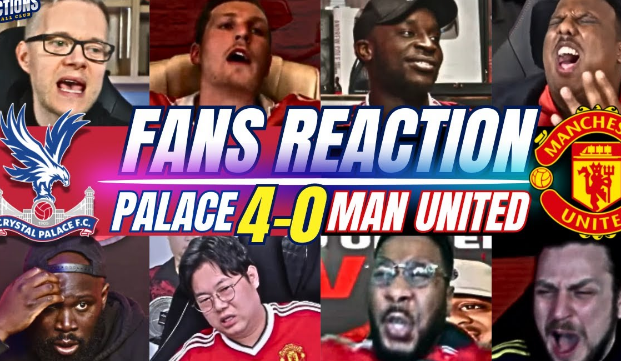Understanding Fan Culture
Fan culture has evolved significantly with the advent of digital media, offering fans new platforms to express their passion and connect with others who share similar interests. Historically, fandoms emerged around television shows, movies, and music, fostering communities among their adherents. However, with the rise of social media, the dynamics of fan interaction have transformed. Platforms like Twitter, Instagram, and TikTok enable fans to engage instantly and directly, enriching the experience of following beloved teams or characters.
Football, for instance, has seen a surge in football Twitter reactions, where fans share their immediate responses to games, players, and controversies. Such reactions not only heighten engagement but also facilitate discussions about post-match interviews and fan opinions on technology like VAR (Video Assistant Referee). These discussions are no longer confined to traditional media but can explode in real-time across social platforms, creating a global dialogue that transcends geographical boundaries.
The formation of identity within fan cultures is another significant aspect worthy of exploration. Fans often incorporate their interests into their personal identities, showcasing their dedication through creative expressions such as memes, art, and podcasts. These outputs serve not just as a reflection of their enthusiasm but also as mechanisms for uniting members of fan communities. The globalization of fandom allows diverse cultures to blend and share, creating a rich tapestry of collective experiences driven by a shared love for particular forms of entertainment.
In this evolving landscape, the significance of fan reactions, especially in football, cannot be understated. Football podcast discussions further exemplify this, as fans gather to analyze games, share opinions, and engage in debates. Ultimately, digital platforms have revolutionized the ways in which fans interact, express their passion, and form communal ties, making fan culture a vibrant and integral part of the modern entertainment landscape.
Types of Fan Reactions
Fan reactions to various media, particularly in the realm of sports, can be categorized into several distinct types, reflecting the diversity of emotions and opinions. First and foremost are emotional reactions, which are often the most visceral and immediate. For instance, following a pivotal match, fans might express jubilation or despair on platforms like Twitter, sharing their raw sentiments regarding the outcome. These football Twitter reactions can range from exuberant celebrations of a last-minute winner to deep frustration over controversial referee decisions, often tied to fan opinions on VAR.
Another significant category is critical commentary, which encompasses analytical perspectives from fans and pundits alike. Such critiques often arise during post-match interviews or through informed discussions on football podcasts, where fans dissect the tactics, player performances, and managerial decisions. This type of fan reaction serves not only to vent frustrations but also to engage in a higher-level discourse regarding the sport, ultimately enriching the fan experience by fostering deeper insights into the game.
Supportive expressions form the third category, where fans rally behind their teams, regardless of the match results. This can be observed in social media posts and fan merchandise advocating loyalty and solidarity, particularly during tough seasons. These reactions may vary significantly across different fandoms, influenced by cultural backgrounds and individual experiences. For example, fans from diverse regions may respond differently to the same football event, reflecting their unique expectations and historical contexts related to the sport. The advent of digital platforms amplifies these reactions, as trending topics transform fleeting emotions into widespread phenomena, allowing fans to connect and share their sentiment globally.
Analyzing Commentary and Critique
In the realm of fandom, fan commentary serves as a pivotal element that shapes how narratives are perceived and developed. Fans articulate their opinions on various aspects, including plot developments, character arcs, and thematic elements, often sharing their insights through platforms like social media, forums, and football podcasts. These discussions not only reflect individual perspectives but also contribute to the collective consciousness of the community. The dialogue generated from fan opinions can range from constructive criticism to toxic negativity, with the former playing a vital role in influencing creators and potentially the trajectory of future content.
Constructive criticism allows fans to engage in a meaningful dialogue about the narrative, opening avenues for improvement and innovation. For instance, when discussing match highlights, fans may analyze a team’s strategies and suggest tweaks that could enhance their performance. In contrast, negative commentary can often stem from disappointment, but may inadvertently miss the nuances of character arcs or storytelling choices. This dichotomy emphasizes the necessity for creators to distinguish between valuable feedback and mere disparagement.
Case studies further illuminate the power of fan commentary in reshaping content. Instances abound where feedback led to improvements or adaptations that resonated well with audiences. Conversely, there are examples where negative responses have sidelined promising ideas, leading to project cancellations or significant revisions. For example, in football Twitter reactions to controversial calls on VAR technology, fans have sparked discussions that compelled leagues to reassess their officiating protocols. Ultimately, fan opinions on varying subjects are not just expressions; they are essential to understanding the current pulse of fandom and can indeed steer the direction of future discourse in any creative landscape.
The Future of Fan Interactions
The landscape of fan interactions is undergoing a significant transformation, driven by technological advancements and changing media consumption habits. As virtual reality (VR) and augmented reality (AR) become increasingly accessible, fans can expect more immersive experiences that provide a deeper connection to their beloved teams and sporting events. Imagine donning a VR headset to watch a match from the sidelines, feeling the atmosphere and excitement as if you were physically present. Such technologies could redefine football Twitter reactions, offering fans the ability to engage in real-time discussions and analyses about match highlights from unique vantage points. This evolution indicates a shift towards a communal experience where fans are not just viewers but active participants in the game itself.
Moreover, the direct collaboration between creators and fans is set to rise, fueled by social media platforms and fan-led projects. Initiatives where fans contribute to content creation, such as designing merchandise or developing storylines, are increasingly common. For instance, many clubs now exhibit official acknowledgments of fan contributions, allowing supporters to feel valued and engaged. This could lead to a richer dialogue between fans and creators, enhancing football podcast discussions and other forms of content tailored to fan preferences.
The implications of artificial intelligence (AI) cannot be overlooked in this context. AI tools are already influencing how content is generated and consumed, offering personalized experiences based on individual interests. Fans may witness tailored post-match interviews and analyses that resonate more closely with their opinions on VAR and other contentious topics. With AI’s capacity to parse vast amounts of data, understanding fan sentiments and creating targeted content becomes much easier, fostering an even more engaging environment for fan interactions.
In summary, the future of fan interactions lies in the convergence of technology, creativity, and community engagement, paving the way for a more inclusive and collaborative fandom experience.

